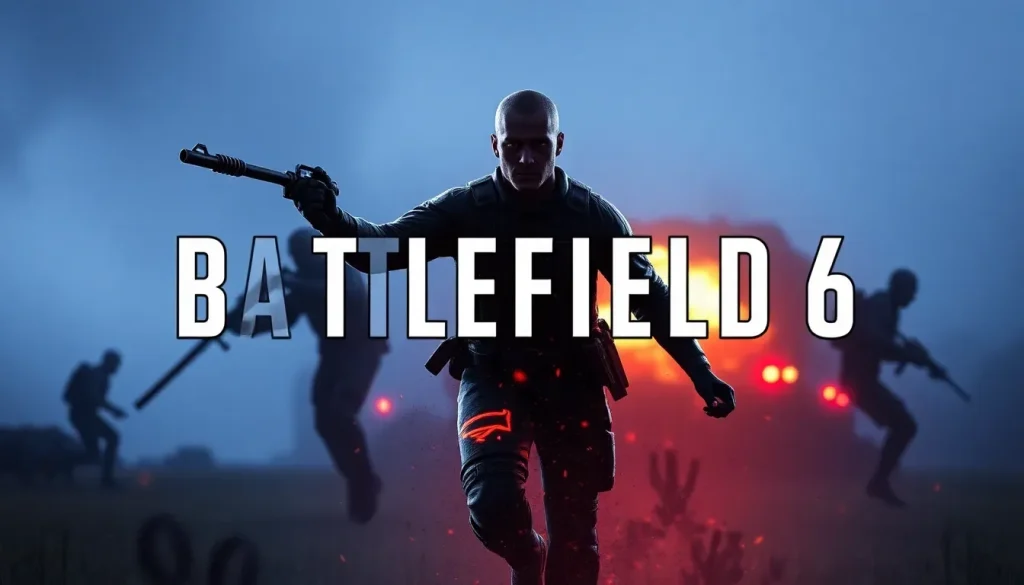Battlefield 6 system requirements and how to prepare your PC

As the eagerly awaited release of Battlefield 6 approaches, both veterans and newcomers are preparing to jump into the action. However, ensuring your PC is ready for the battlefield goes beyond just having the right hardware; it also requires optimizing your software settings for a seamless gaming experience.
In this article, we will explore the essential system requirements for Battlefield 6, along with critical software features that can enhance your gameplay and security.
Understanding hardware requirements
To start, EA has outlined two specific sets of system requirements for Battlefield 6: the minimum and recommended specifications. While the company has not specified the expected performance levels for each category, the details provided can help players gauge their systems' readiness.
Interestingly, the minimum requirements for Battlefield 6 are quite approachable. Players need only an eight-year-old hexa-core processor and a low-end graphics card equipped with 6GB of VRAM to run the game. For example, the aging RTX 2060 is still capable of handling DICE's latest title effectively.
Here’s a quick breakdown of the minimum requirements:
- Processor: Hexa-core (6 cores)
- Graphics Card: 6GB VRAM
- RAM: 16GB
- Storage Space: 55GB free
- Storage Type: HDD (not recommended)
In contrast, the recommended hardware is noticeably more robust, shifting to octa-core processors and GPUs with 12GB of memory. To run Battlefield 6 optimally, players will need to invest in newer technology. For those on a budget, the Arc B580 is an economical option that meets the demands of the game.
In this tier, the storage requirements increase to 80GB, making an SSD essential for a smooth experience. Here are the recommended requirements summarized:
- Processor: Octa-core (8 cores)
- Graphics Card: 12GB VRAM
- RAM: 16GB
- Storage Space: 80GB free
- Storage Type: SSD
Security features: HVCI
Moving beyond hardware, players should also consider the security features integrated into their operating systems. One such feature is Hypervisor-Protected Code Integrity (HVCI), commonly referred to as 'Memory Integrity'. This security measure is available in both Windows 10 and Windows 11, providing a safeguard against malware attacks.
To check if HVCI is enabled, follow these steps:
- Search for 'Core Isolation' in the Windows taskbar or settings app.
- Verify that Memory Integrity is activated.
This simple step can significantly enhance your PC's defenses while gaming, protecting against potential threats that could disrupt your experience.
Secure Boot and TPM 2.0: Essential security measures
Secure Boot is another critical feature designed to protect your PC from unauthorized software, such as rootkits, during the boot phase. Coupled with this is the Trusted Platform Module (TPM), which strengthens your system's security through cryptographic keys.
TPM 2.0 is now a standard requirement for Windows 11, meaning if you are already using this operating system, you might not need to enable it manually. Here’s how to check if both Secure Boot and TPM 2.0 are functioning properly:
- Open Steam and navigate to the 'Help' tab.
- Click on 'System Information' and scroll down to the 'Operating System' section.
- For a more detailed view, open the 'System Information' application by pressing CTRL+R, typing 'msinfo32', and hitting Enter.
Inside the System Information application, check for the following:
- BIOS Mode: Should be set to 'UEFI'
- Secure Boot State: Should be 'On'
For verifying TPM 2.0, again use the Run dialog (CTRL+R) and type 'tpm.msc'. You’ll need administrative permissions to access this feature.
- Ensure you see 'The TPM is ready for use' in the Status box.
Virtualization Based Security (VBS): What you need to know
Another layer of security is provided by Virtualization Based Security (VBS), which utilizes virtual environments to shield the operating system's core, known as the kernel. This feature is designed to bolster system security against various threats.
To determine if VBS is active, you can use the same 'System Information' application. Typically, VBS will be enabled by default, but if you find it isn't activated, simply enabling HVCI may resolve the issue.
Additional optimization tips for Battlefield 6
Aside from ensuring your hardware and software meet the necessary requirements, there are several optimization tips that can enhance your gaming experience:
- Keep your drivers updated: Regularly update your graphics drivers for improved performance and stability.
- Adjust in-game settings: Tweak graphics settings based on your hardware capabilities to achieve a balance between performance and visual quality.
- Monitor background applications: Close unnecessary applications while gaming to free up system resources.
- Utilize performance monitoring tools: Use software like MSI Afterburner to track in-game performance and hardware usage.
With Battlefield 6 set to launch on October 10, players can look forward to an exhilarating experience. The game will be available for purchase through various platforms, including the EA App, Epic Games Store, and Steam.
For further insights and guides on gaming technology and beyond, be sure to follow the Club386 Google News feed.
For a deeper dive into optimizing your PC for Battlefield 6, check out this video that discusses recommended system setups:




Leave a Reply